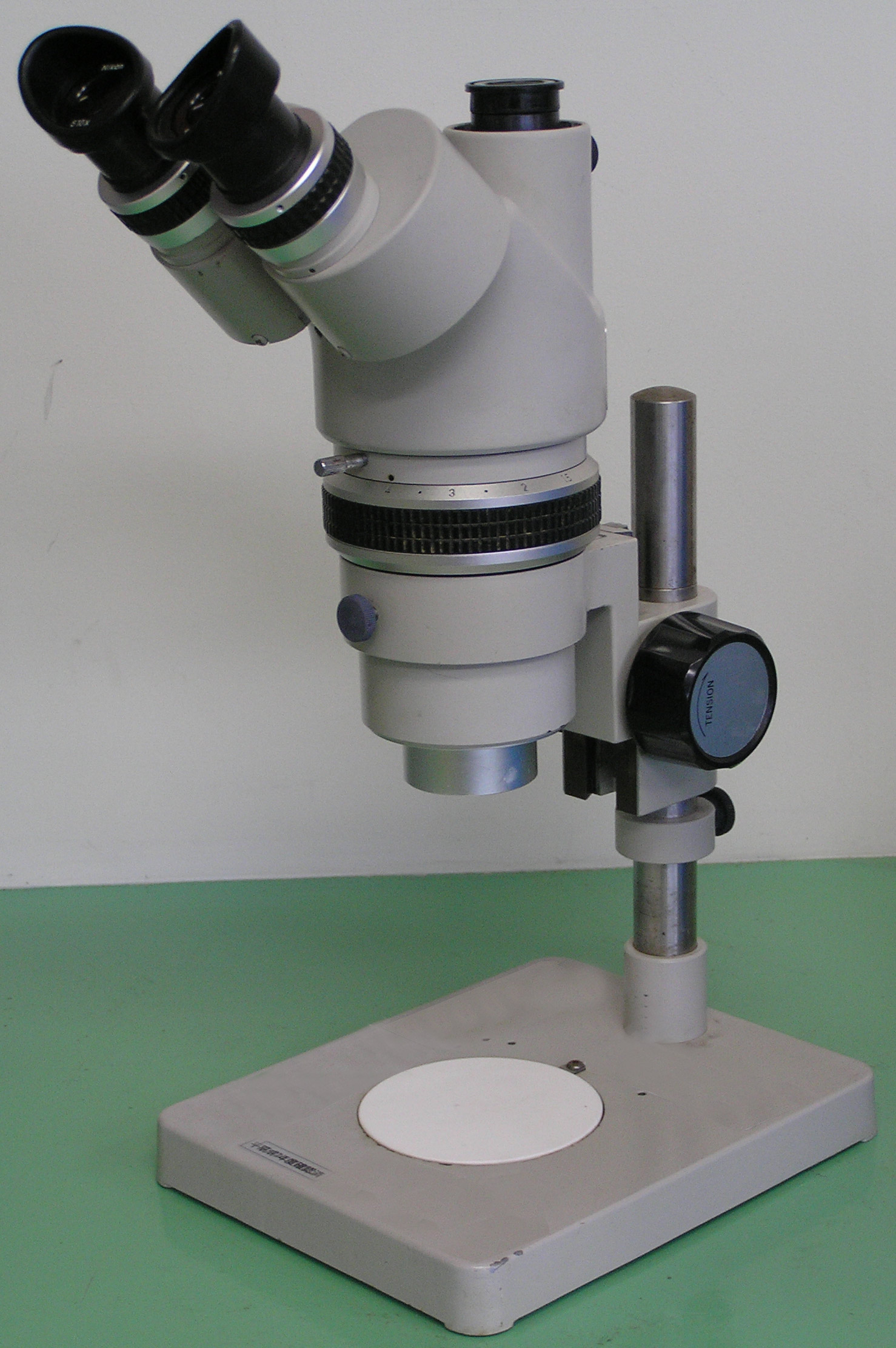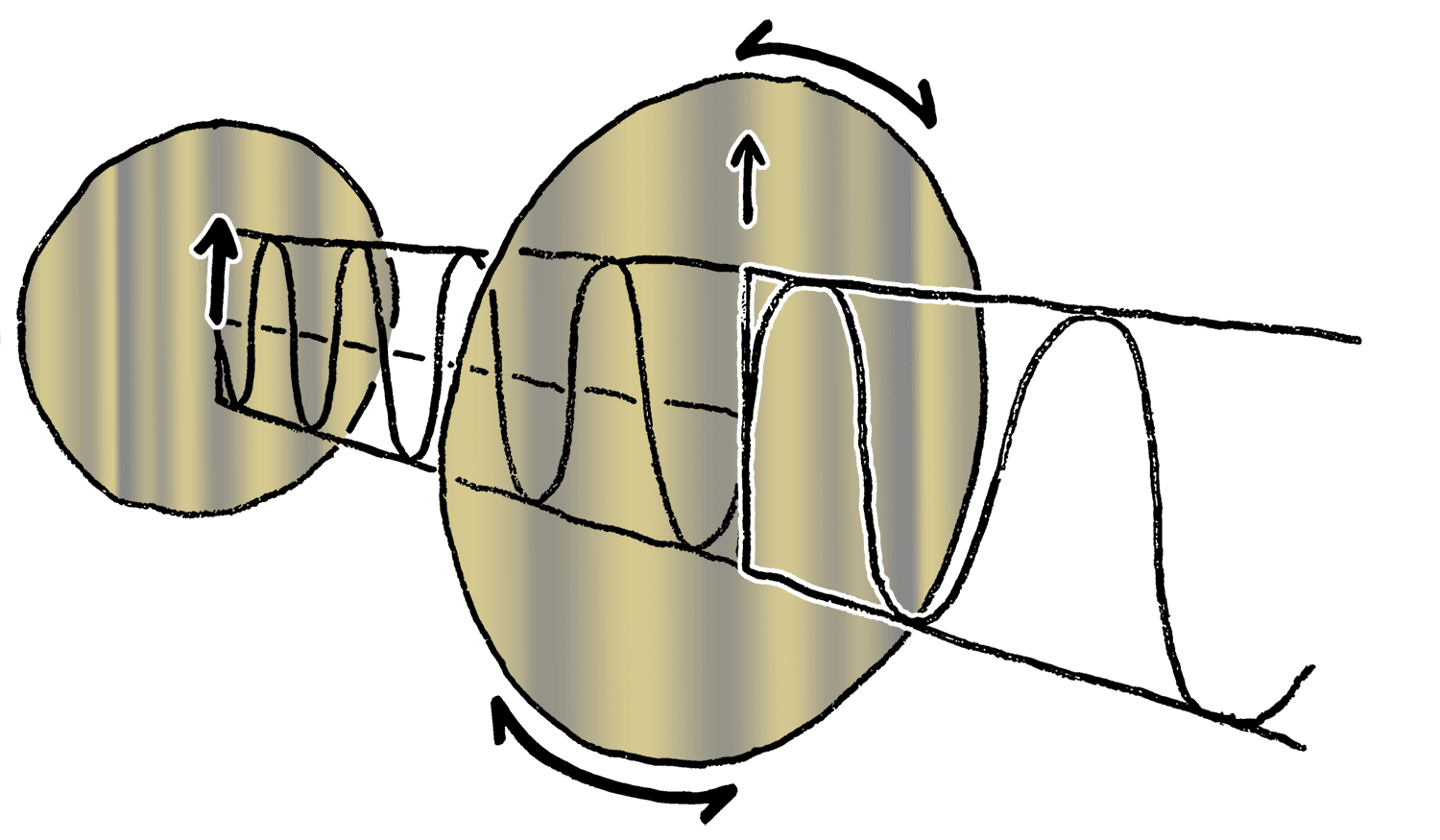|
Nicol Prism
A Nicol prism is a type of polarizer. It is an optical device made from calcite crystal used to convert ordinary light into plane polarized light. It is made in such a way that it eliminates one of the rays by total internal reflection, i.e. the ordinary ray is eliminated and only the extraordinary ray is transmitted through the prism. It was the first type of polarizing prism, invented in 1828 by William Nicol (1770–1851) of Edinburgh. Mechanism The Nicol prism consists of a rhombohedral crystal of Iceland spar (a variety of calcite) that has been cut at an angle of 68° with respect to the crystal axis, cut again diagonally, and then rejoined, using a layer of transparent Canada balsam as a glue. Unpolarized light ray enters through the side face of the crystal, and is split into two orthogonally polarized, differently directed rays by the birefringence property of calcite. The ''ordinary'' ray, or ''o''-ray, experiences a refractive index of ''n''o = 1.658 in ... [...More Info...] [...Related Items...] OR: [Wikipedia] [Google] [Baidu] |
Refractive Index
In optics, the refractive index (or refraction index) of an optical medium is the ratio of the apparent speed of light in the air or vacuum to the speed in the medium. The refractive index determines how much the path of light is bent, or refraction, refracted, when entering a material. This is described by Snell's law of refraction, , where and are the angle of incidence (optics), angle of incidence and angle of refraction, respectively, of a ray crossing the interface between two media with refractive indices and . The refractive indices also determine the amount of light that is reflectivity, reflected when reaching the interface, as well as the critical angle for total internal reflection, their intensity (Fresnel equations) and Brewster's angle. The refractive index, n, can be seen as the factor by which the speed and the wavelength of the radiation are reduced with respect to their vacuum values: the speed of light in a medium is , and similarly the wavelength in that me ... [...More Info...] [...Related Items...] OR: [Wikipedia] [Google] [Baidu] |
Polarization (waves)
, or , is a property of transverse waves which specifies the geometrical orientation of the oscillations. In a transverse wave, the direction of the oscillation is perpendicular to the direction of motion of the wave. One example of a polarized transverse wave is vibrations traveling along a taut string, for example, in a musical instrument like a guitar string. Depending on how the string is plucked, the vibrations can be in a vertical direction, horizontal direction, or at any angle perpendicular to the string. In contrast, in longitudinal waves, such as sound waves in a liquid or gas, the displacement of the particles in the oscillation is always in the direction of propagation, so these waves do not exhibit polarization. Transverse waves that exhibit polarization include electromagnetic waves such as light and radio waves, gravitational waves, and transverse sound waves ( shear waves) in solids. An electromagnetic wave such as light consists of a coupled oscillating el ... [...More Info...] [...Related Items...] OR: [Wikipedia] [Google] [Baidu] |
Microscopy
Microscopy is the technical field of using microscopes to view subjects too small to be seen with the naked eye (objects that are not within the resolution range of the normal eye). There are three well-known branches of microscopy: optical microscope, optical, electron microscope, electron, and scanning probe microscopy, along with the emerging field of X-ray microscopy. Optical microscopy and electron microscopy involve the diffraction, reflection (physics), reflection, or refraction of electromagnetic radiation/electron beams interacting with the Laboratory specimen, specimen, and the collection of the scattered radiation or another signal in order to create an image. This process may be carried out by wide-field irradiation of the sample (for example standard light microscopy and transmission electron microscope, transmission electron microscopy) or by scanning a fine beam over the sample (for example confocal laser scanning microscopy and scanning electron microscopy). Scan ... [...More Info...] [...Related Items...] OR: [Wikipedia] [Google] [Baidu] |
1828 In Science
The year 1828 in science and technology involved some significant events, listed below. Astronomy * Félix Savary computes the first orbit of a visual double star when he calculates the orbit of the double star Xi Ursae Majoris. Biology * April 18 – Ornithologist Carl Julian (von) Graba lands in the little-studied Faroe Islands for a 3-month visit to research the bird life. * April 27 – London Zoo opens in Regent's Park for members of the Zoological Society of London, the first scientific zoo in the United Kingdom. * October 26 – English naturalist and explorer William John Burchell collects the only known specimen of '' Parabouchetia brasiliensis'', an exceptionally rare member of the nightshade family Solanaceae, in central Brazil. * Karl Ernst von Baer lays the foundations of the science of comparative embryology with his book ''Über Entwickelungsgeschichte der Thiere''. He publishes von Baer's laws. * Martin Lichtenstein publishes a monograph on the ''Dipodidae'' ... [...More Info...] [...Related Items...] OR: [Wikipedia] [Google] [Baidu] |
Glan–Thompson Prism
A Glan–Thompson prism is a type of polarizing prism similar to the Nicol prism and Glan–Foucault prism. Design A Glan–Thompson prism consists of two right-angled calcite prisms that are cemented together by their long faces. The optical axes of the calcite crystals are parallel and aligned perpendicular to the plane of reflection. Birefringence splits light entering the prism into two rays, experiencing different refractive indices; the ''p''-polarized ordinary ray is totally internally reflected from the calcite–cement interface, leaving the ''s''-polarized extraordinary ray to be transmitted. The prism can therefore be used as a polarizing beam splitter. Traditionally Canada balsam was used as the cement in assembling these prisms, but this has largely been replaced by synthetic polymers. Characteristics Compared to the similar Glan–Foucault prism, the Glan–Thompson has a wider acceptance angle, but a much lower limit of maximal irradiance In radiometry, ... [...More Info...] [...Related Items...] OR: [Wikipedia] [Google] [Baidu] |
Polaroid (polarizer)
Polaroid is a type of synthetic plastic sheet which is used as a polarizer or polarizing filter. A trademark of the Polaroid Corporation, the term has since entered common use. Patent The original material, patented in 1929 and further developed in 1932 by Edwin H. Land, consists of many microscopic crystals of iodoquinine sulphate (herapathite) embedded in a transparent nitrocellulose polymer film. The needle-like crystals are aligned during the manufacture of the film by stretching or by applying electric or magnetic fields. With the crystals aligned, the sheet is dichroic: it tends to absorb light which is polarized parallel to the direction of crystal alignment but to transmit light which is polarized perpendicular to it. The resultant electric field of an electromagnetic wave (such as light) determines its polarization. If the wave interacts with a line of crystals as in a sheet of polaroid, any varying electric field in the direction parallel to the line of the crystals wi ... [...More Info...] [...Related Items...] OR: [Wikipedia] [Google] [Baidu] |
Polarimetry
Polarimetry is the measurement and interpretation of the polarization of transverse waves, most notably electromagnetic waves, such as radio or light waves. Typically polarimetry is done on electromagnetic waves that have traveled through or have been reflected, refracted or diffracted by some material in order to characterize that object. Plane polarized light: According to the wave theory of light, an ordinary ray of light is considered to be vibrating in all planes of right angles to the direction of its propagation. If this ordinary ray of light is passed through a nicol prism, the emergent ray has its vibration only in one plane. Applications Polarimetry of thin films and surfaces is commonly known as ellipsometry. Polarimetry is used in remote sensing applications, such as planetary science, astronomy, and weather radar. Polarimetry can also be included in computational analysis of waves. For example, radars often consider wave polarization in post-processing to im ... [...More Info...] [...Related Items...] OR: [Wikipedia] [Google] [Baidu] |
Microscopy
Microscopy is the technical field of using microscopes to view subjects too small to be seen with the naked eye (objects that are not within the resolution range of the normal eye). There are three well-known branches of microscopy: optical microscope, optical, electron microscope, electron, and scanning probe microscopy, along with the emerging field of X-ray microscopy. Optical microscopy and electron microscopy involve the diffraction, reflection (physics), reflection, or refraction of electromagnetic radiation/electron beams interacting with the Laboratory specimen, specimen, and the collection of the scattered radiation or another signal in order to create an image. This process may be carried out by wide-field irradiation of the sample (for example standard light microscopy and transmission electron microscope, transmission electron microscopy) or by scanning a fine beam over the sample (for example confocal laser scanning microscopy and scanning electron microscopy). Scan ... [...More Info...] [...Related Items...] OR: [Wikipedia] [Google] [Baidu] |
Orthogonality
In mathematics, orthogonality is the generalization of the geometric notion of '' perpendicularity''. Although many authors use the two terms ''perpendicular'' and ''orthogonal'' interchangeably, the term ''perpendicular'' is more specifically used for lines and planes that intersect to form a right angle, whereas ''orthogonal'' is used in generalizations, such as ''orthogonal vectors'' or ''orthogonal curves''. ''Orthogonality'' is also used with various meanings that are often weakly related or not related at all with the mathematical meanings. Etymology The word comes from the Ancient Greek ('), meaning "upright", and ('), meaning "angle". The Ancient Greek (') and Classical Latin ' originally denoted a rectangle. Later, they came to mean a right triangle. In the 12th century, the post-classical Latin word ''orthogonalis'' came to mean a right angle or something related to a right angle. Mathematics Physics Optics In optics, polarization states are said to be ort ... [...More Info...] [...Related Items...] OR: [Wikipedia] [Google] [Baidu] |
Plane Polarized Light
, or , is a property of transverse waves which specifies the geometrical orientation of the oscillations. In a transverse wave, the direction of the oscillation is perpendicular to the direction of motion of the wave. One example of a polarized transverse wave is vibrations traveling along a taut string, for example, in a musical instrument like a guitar string. Depending on how the string is plucked, the vibrations can be in a vertical direction, horizontal direction, or at any angle perpendicular to the string. In contrast, in longitudinal waves, such as sound waves in a liquid or gas, the displacement of the particles in the oscillation is always in the direction of propagation, so these waves do not exhibit polarization. Transverse waves that exhibit polarization include electromagnetic waves such as light and radio waves, gravitational waves, and transverse sound waves (shear waves) in solids. An electromagnetic wave such as light consists of a coupled oscillating electr ... [...More Info...] [...Related Items...] OR: [Wikipedia] [Google] [Baidu] |





